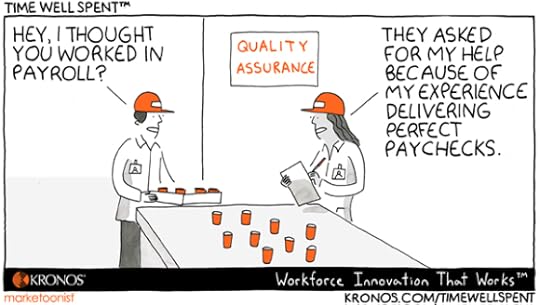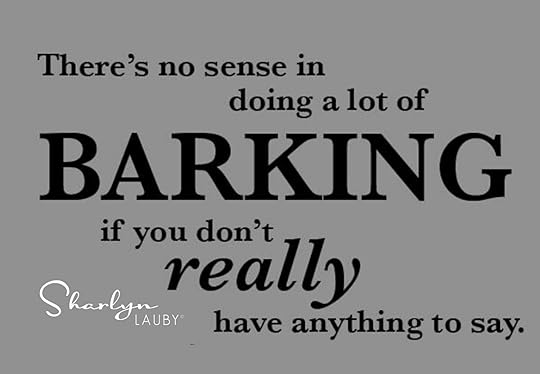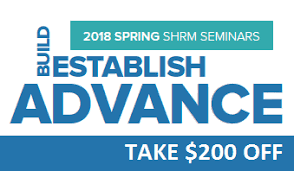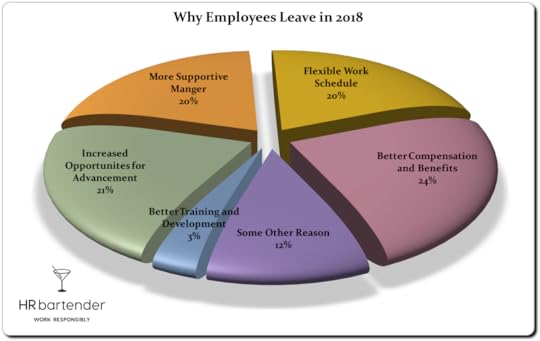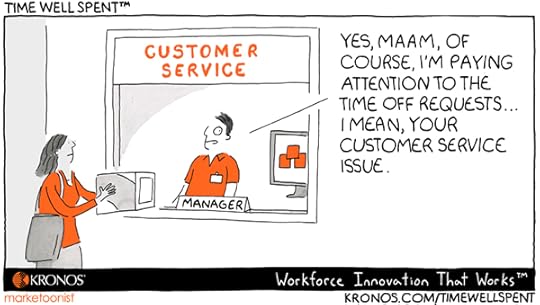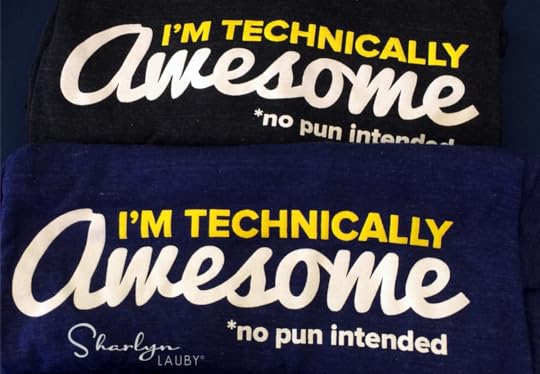Sharlyn J. Lauby's Blog, page 122
February 27, 2018
Think #Workflex – A Win for Both Employers and Employees
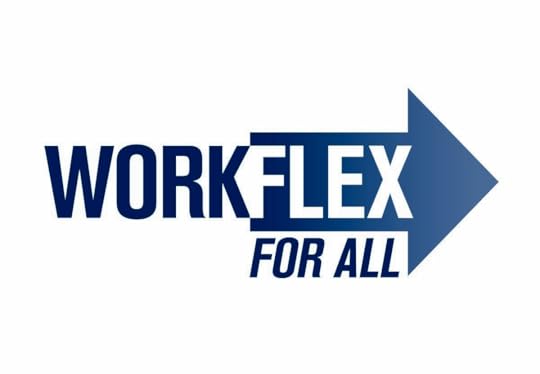 I think I’ve mentioned to you before that I’m a member of the Society for Human Resource Management (SHRM) Advocacy Team (aka the A-Team). The A-Team was created by SHRM Government Affairs to keep HR pros in the loop about public policy issues that impact the workplace.
I think I’ve mentioned to you before that I’m a member of the Society for Human Resource Management (SHRM) Advocacy Team (aka the A-Team). The A-Team was created by SHRM Government Affairs to keep HR pros in the loop about public policy issues that impact the workplace.
As a human resources professional, it can be a challenge to keep up with legislation and compliance matters much less stay on top of the ones being discussed by our legislators. One of the benefits of being on the A-Team is a quarterly webinar where they talk about issues that are being discussed in Washington. Personally, I find the one-hour investment well worth my time.
So, why am I telling you all this? Because on the last call, SHRM shared some information about H.R. 4219 (also known as the Workflex in the 21st Century Act). This legislation is focused on two hot topics in our workplaces right now – paid leave and flexible work.
A Little Background about Paid Leave
Nine states and over thirty localities have implemented some type of paid sick leave legislation over the past few years. What’s interesting about this development, is that all paid leave isn’t the same. I don’t want to add confusion to an already complex issue, but I found an article that explains the different types of paid leave on TLNT.com titled “How New York’s New Paid Family Leave Impacts Your Organization (Even If You’re Not in NY)”. It’s important to note that we’re talking about paid sick leave today (not paid family leave).
According to Lisa Horn, director of congressional affairs at SHRM, many SHRM members have expressed frustration about all the different types of leaves available and suggested that it would be awesome for there to be legislation that gives employees the benefit while at the same time gives employers the flexibility they need to run their business.
So, SHRM developed the Workflex in the 21st Century Act to accomplish those two goals: 1) provide employees with guaranteed paid leave and a workflex option AND 2) give employers the flexibility to create and administer a policy that aligns with their business and culture.
Workflex Legislation: A 21st Century Solution
Before I give you the high-level overview of H.R. 4219, keep in mind that all legislation is detailed and complicated. For a more comprehensive read, check out the workflex page on the SHRM Policy Action Center website. Basically, the Act does three things:
It’s voluntary for employers. Organizations can voluntarily offer employees a qualified flexible work arrangement plan that includes a federal standard of paid time off and options for flexible work.
It pre-empts state and local provisions. Workflex would be an ERISA covered plan so employers that opt-in to Workflex would be pre-empted from state and local paid leave sick laws.
It’s fiscally responsible. Because the law is voluntary, organizations have the ability to decide if this fits their budget. And if they do opt-in, they have some control over the types of flexible work options they offer to employees.
And let’s not forget what this Act does for employees. We talk a lot about the importance of recruiting the best talent, engaging employees to achieve maximum productivity, and employee retention. This Workflex Act is designed to give employees a benefit that they want and are actively seeking out when they look at future job opportunities.
How You Can Help Make Workflex a Reality
Remember the old Schoolhouse Rock song, “I’m Just a Bill”? Well, we’re at the “stuck in committee on Capitol Hill” step. LOL!
Seriously, this is one of those moments where HR has a real opportunity to make a difference for employees and the business. The Workflex legislation was recently introduced by Rep. Mimi Walters (R-California). Now, it needs people – like us – to start talking about it with our legislators.
So, after you check out the Workflex page on the SHRM Policy Action Center, if you like what you see and want to support it, here’s what you need to do. It’s not a lot – only two quick things.
Sign up for updates about this bill on the Employers for Flexibility
Consider writing or calling your representative. If you’re a member of the A-Team, you can do this via the SHRM Policy Action Center. If you’re not, you can send a note via Countable, Resistbot, or whatever communication method works for you.
Oh, my apologies, one more thing. If you have a Twitter account, you can save the #WorkflexBill hashtag to stay current on what’s happening with the bill.
Advocating for our profession is an integral part of being a human resources business leader. But it means getting involved from the beginning to help our legislators understand what organizations and employees want.
The post Think #Workflex – A Win for Both Employers and Employees appeared first on hr bartender.






February 25, 2018
Employee Access to Payroll Records – Ask #HR Bartender
One of the departments that HR works closely with is payroll. In my career, I’ve had jobs where I was directly responsibility for payroll and in others, I wasn’t. Either way, HR and accounting need to partner so employees aren’t confused. Like in today’s reader note.
I live in Ohio. My company uses a website to ‘give’ employees electronic access to their paycheck stubs, rather than issue paper. Since being hired, I’ve complained several times that the system doesn’t recognize me, and I can’t see my paycheck stubs.
Recently, I was given the choice of being terminated or resigning of my own free will. I walked. But, I still cannot access my past paycheck stubs. I fear that I will need them in the future months to show employment, for tax purposes, etc. Do I have any legal ‘right’ to these and does the company have to give me access, even if it’s in the form of paper copies?
No one in the payroll office seems willing or able to assist. I want to write a letter, but I need to know if I have any legal leg to stand on via either Ohio or federal law in case they say ‘Well, we can’t help it your password and remote access doesn’t work. Tough luck.’ Hoping you can help, because Google has been zero help in this!
To help us understand more about accessing payroll records, I asked our friends at Foley & Lardner LLP if they could help and thankfully they said “yes”. Archana A. Manwani is senior associate with the firm based in Los Angeles, California and advises clients on a wide array of personnel-related matters including employee discipline, wage and hour, and disability accommodation.
I know you guys already know this, but please remember that Archana has a regular full-time job as a lawyer and she’s doing this to give back to the profession. Her comments should not be construed as legal advice or as pertaining to any specific factual situations. If you have detailed questions, you should address them directly with your friendly neighborhood labor and employment attorney.
Archana, in this scenario, the reader is asking about payroll records. Are payroll records governed by state law or federal law?
 [Manwani] There is no federal law requiring that private employers provide their employees with access to their payroll records. However, many states have their own laws that do require such access. Employees can review their state’s agency websites to get more information. For example, the state of California has an agency called the Division of Labor Standards Enforcement that addresses wage and hour issues, and a simple search on their website provides information regarding pay stub access.
[Manwani] There is no federal law requiring that private employers provide their employees with access to their payroll records. However, many states have their own laws that do require such access. Employees can review their state’s agency websites to get more information. For example, the state of California has an agency called the Division of Labor Standards Enforcement that addresses wage and hour issues, and a simple search on their website provides information regarding pay stub access.
I could see a lot of companies, in an effort to save paper, giving employees electronic access to their payroll records. Does the law address at all the company’s obligation to provide employees with access to their payroll information?
[Manwani] This varies state by state. Many states have laws that require the employer to grant their employees access to payroll information. For example, California has a specific statute (Labor Code Section 226(b)) that requires employers to permit both current and former employees to inspect and obtain copies of their payroll records. The California law imposes a penalty if the employer does not comply with an employee’s request within a certain period of time, so it is important to confirm if one of these state laws applies to you.
This might sound like we’re splitting hairs, but if an organization has an electronic payroll system (like the one described in the reader note), do they have an obligation to provide paper copies to employees upon request? Why or why not?
[Manwani] This is a common question and again, will depend on whether the employee is in a state that legally requires access to records. If the state does not require such access, then the employer will not have an obligation to provide the employee with paper records.
If the state does require such access, like California, then the employer has to ensure that the employee can access and obtain the records. If an employer’s system provides the employee with electronic access and the employee can readily log on and access his or her pay record (either on the internal system or as a PDF), then it is unlikely that the state law will also require the employer to provide paper copies. If, however, the employer’s system does not provide easy access – like the scenario described in the reader note – then the law will most likely require that the employer provide paper copies to the employee upon request, as the electronic system is not complying with the requirement to give employees access to their pay records.
Let’s say for a moment that the company doesn’t have an electronic system. If an employee loses their paycheck stub and wants to get a copy from the company, is the company obligated to provide it? And out of curiosity, can they charge employees for duplicate copies?
[Manwani] This again will depend on whether the employee works in a state that requires employees to have access to their records. For example, in California, the company would be obligated to provide the records within 21 days of the employee’s request.
Whether or not the employer can charge for these records will also depend on whether there is a state law permitting the employer to do so. Some states, like California, have laws that explicitly permit the employer to charge for copies of personnel files but do not have laws that explicitly permit the employer to charge for copies of payroll records, and it would therefore be best practice to not charge the employee for a duplicate copy of his/her pay stub. As many employees have personal emails and computer access, an employer that is trying to reduce paper costs could offer to send the employee electronic scans (or PDFs) of the paystubs in order to avoid duplicate paper copies. The state agency websites should have information regarding whether employers may recover the costs of providing copies.
Last question, this reader mentioned “Googling” for information about this situation. What suggestions would you give to an employee who is trying to find out information about employment matters using the internet?
[Manwani] The internet can be a great resource, but it can also be a source of a lot of incorrect information! If an employee is trying to search for information online, it would be best to visit verified websites – such as state agency sites, law firm websites, or human resource forums like HR Bartender or the Society for Human Resource (SHRM) website – rather than personal blogs or websites where unverified people are offering advice based on their own personal opinions.
My thanks to Archana for sharing her knowledge with us. Let me add that if you’re looking to stay on top of labor and employment law issues, be sure to sign up for Foley & Lardner’s electronic newsletter or follow one of their blogs. They are on my must-read list.
Even if HR doesn’t have responsibility for payroll, many employees go to HR first when it’s time to answer a payroll question. HR can play a significant role in helping employees understand expectations and how to resolve their own payroll challenges.
Image captured by Sharlyn Lauby exploring the Castillo de la Real Fuerza in Havana, Cuba
The post Employee Access to Payroll Records – Ask #HR Bartender appeared first on hr bartender.






February 23, 2018
Quality is Everywhere – Friday Distraction
(Editor’s Note: Today’s article is brought to you by our friends at Kronos , a leading provider of quality workforce management and human capital management cloud solutions. For the first time, Kronos was named according to global research and consulting firm Great Place to Work. Congrats to them! Enjoy the article.)
I know sometimes when I think of quality, I tend to think of traditional manufacturing. But I have to remind myself that quality exists everywhere. Our friends at Kronos remind us in today’s Time Well Spent that it includes human resources and payroll.
But how does HR and payroll measure quality? Well, the good news is we can draw a few ideas from traditional manufacturing. Here are four ways:
Processing time. Does it take what the organization considers to be a reasonable amount of time to complete a task? One of the first processes that comes to mind is time to fill. According to the Society for Human Resource Management (SHRM), average time to fill is 42 days. For some organizations, it could be longer. What steps can HR take to improve processing time?
Delivery time. This relates to processing time. Does HR and payroll deliver results in a way that makes sense for the organization? I remember years ago going to work for a new company where the managers complained that my predecessor would always schedule training at the worst time. They wanted the training, just at a time that was better for the operation.
Cost. I’m not talking about HR and payroll becoming revenue generating departments. We can save that conversation for another post. But HR and payroll should always be thinking of ways to streamline expenses. Cost also refers to value. The activities being managed by HR and payroll should be viewed as valuable to the rest of the organization.
Reduced waste. I view this as more than a cost issue. Reduced waste is also about time. It’s true that HR and payroll are very process driven. And we have a compliance component to consider. But do we think of ways to reduce administration and bureaucracy? Technology can be a big help in reducing waste.
Quality measurements exist in every department. HR and payroll have to produce quality in their work by delivering results on-time and within budget. When that happens, they produce the value that the organization is looking for.
The post Quality is Everywhere – Friday Distraction appeared first on hr bartender.






February 22, 2018
HR Pros: Your Next Workplace May Be in Space
Before you read today’s title and totally dismiss the article, take a moment to think about recent events in our space program. Elon Musk launched SpaceX’s Falcon Heavy, the most powerful operational rocket in the world. NASA has a documented plan (with a timetable) to send humans to the Red Planet. It’s possible in our lifetimes that people (not just astronauts) will be able to visit and live on other planets.
This means that individuals need to be ready with the skills that will help them be successful. It’s estimated that a one-way trip to Mars will consume approximately 500 days. So, this scenario isn’t like our current workplaces where someone signs on to go to Mars, gets there, doesn’t like it, and can simply come back. OR they get to Mars and don’t like the people they’re living and working with, so they want to quit.
To successfully colonize Mars, individuals need to have the knowledge, skills, and abilities to handle the trip as well as work with others. And unless NASA plans to send an HR pro along for the ride, then part of our responsibility as business leaders is to help individuals get the skills they need prior to leaving this planet for another one.
The reason I’m floating this idea is because I’ve recently learned about a very cool event. The 2018 Cross Cultural Management Summit is focused this year on “Going Beyond Global” to include space. It’s being held March 22-24, 2018 in Orlando, Florida. The conference has partnered with the Buzz Aldrin Space Institute to create an interactive program that will use the Mars mission as a case study to present the potential cross-cultural management issues associated with creating a permanent colony on Mars.
Of course, this isn’t going to happen overnight. Any project of this scope and size will take a great deal of time and lots of resources. But that’s why we need to have these conversations now. The human resources profession will absolutely want to be a part of the discussion. And they need to be!
Think about what happens in your organization right now when an employee says they want to take a sabbatical, work from home, or the like. Imagine if an employee asked if they could work from Mars. What would logistics like payroll, benefits, etc. look like? How would they receive training to keep their skills fresh? How would their manager evaluate performance and coach an underperforming employee? Oh, and what happens if they decide they want to resign or retire?
I know some of you are saying, “The number of employees who will want to do this is sooo small. We’ll handle it on a case-by-case basis. Problem solved.” But let me push back for a moment. First of all, Elon Musk’s plan is to put a million people on Mars. NASA’s number isn’t quite as high but it’s large enough to need a talent management and organizational development strategy. In my experience, handling issues on a “as they come” basis is sometimes how we end up with inconsistencies, favoritism, and disengagement. Again, I don’t have all the answers here. But I do believe you have employees right now who would love to go to Mars. Organizations need to be ready.
This is a true opportunity to start thinking strategically about global HR – and beyond. I’m looking forward to being there and I just think this is so forward-thinking that I wanted to share it with you. The program has also been pre-certified for both SHRM and HRCI recertification credits. Dr. Zhiqing Zhou has promised to offer HR Bartender readers a discount on registration ($450 instead of $899)! Just reach out to him via the contact page on the summit website.
Years ago, the idea of regular people living and working on another planet was only available to us in movies like Star Wars or The Matrix. Today, it’s getting much closer to reality. We need to get ready.
The post HR Pros: Your Next Workplace May Be in Space appeared first on hr bartender.






February 20, 2018
5 Ways to Reinvent the Traditional Job Interview
Over the past couple of years, companies have been talking about “reinventing the performance appraisal”. Well, performance reviews aren’t the only process that’s being re-examined. Let’s take a look at the job interview.
According to LinkedIn’s Global Recruiting Trends Report 2018, fifty-six percent (56%) of talent professionals say that new interview tools and methods are changing the way they hire. Now, like the traditional performance review, we can’t just stop doing interviews, but it could make some sense to introduce some new strategies into the existing process.
LinkedIn’s report cited five key areas where the traditional job interview isn’t helping HR and hiring managers make the best selections.
And they suggest five techniques that could provide more value.
Online assessments. We’ve talked before about how cognitive aptitude tests can play a role in measuring a candidate’s ability to solve problems, apply information, and think critically. The key is administering the assessment at the right point in the interview process.
Job auditions. Organizations can pay candidates to do a project so they can see the person in action. Think of this like a realistic job preview. Both the company and the candidate would get a real sense of what the employment relationship would be like.
Casual interviews. This already happens in some industries. Instead of a formal conversation in a stuffy conference room, the job interview takes place over a meal or coffee. It’s a great way to get to know someone. Just be up front and don’t play any tricks on the candidate.
Virtual reality (VR). I’m not sure how many organizations would make the investment in this type of interview format. I could see it happening in airlines where they already have simulators. Or organizations could do something similar to VR with a game like the “My Marriott Hotel” (which is no longer active, sorry!).
Video interviews. These are especially helpful when you’re recruiting globally and don’t have the budget to meet face-to-face. However, video interviews aren’t exactly the same as in-person ones, so companies might want to provide some helpful tips to candidates.
As the business world changes, so do our processes. At least they should! And that’s a good thing. Technology is supporting us in ways we could never imagine. This doesn’t mean we have to turn everything upside down. Organizations can effectively manage change and introduce new ways of doing things by integrating a technique (like the ones above) one at a time.
P.S. If you’re looking for some new techniques to add to your talent acquisition process, I hope you’ll check out the Society for Human Resource Management (SHRM) virtual and in-person seminars. In particular, the one I’m facilitating on “Talent Acquisition: Creating Your Organization’s Strategy”. SHRM is offering a $200 discount on any SHRM seminar registration (except Certification Prep) made between now and February 28, 2018. Just use the code 18SEMALUMSP. And don’t forget the seminar has been pre-approved for SHRM and HRCI recertification credits!
The post 5 Ways to Reinvent the Traditional Job Interview appeared first on hr bartender.






February 18, 2018
Why Employees Leave Companies in 2018 [poll results]
A few weeks ago, I asked the question “If you were to start looking for a new job today, what would be the number one reason?” And the majority of employees responded…
Better compensation and benefits.
So, as much as we might not want to admit that money drives career decisions, it does. And as human resources professionals, we just can’t ignore this. Money is still important and we have to find ways to take the money conversation “off the table”, meaning that employees need to feel that they are getting paid competitively both internally and externally. They also want relevant benefits that they can use.
It won’t be any surprise that not too far behind compensation and benefits was a three-way tie with opportunities for advancement, supportive management, and flexible work. In some way, I can see all of these reasons being interrelated. Is management supportive of flexible work? Are managers coaching and mentoring employees for future opportunities? Can team members move into positions of greater responsibility and still have a flexible work schedule?
While I tried to keep this survey simple and only allowed for one response, it’s obvious that the reasons employees leave in 2018 are multi-faceted. It also demonstrates how necessary it is for managers and HR to do regular stay interviews and exit interviews as a way to understand what their workforce likes about the company.
The one area of this survey that did surprise me was the less than 4 percent who cited they wanted better training and development. I wonder what employee expectations are when it comes to company training. Is it possible that all of the conversation about “owning your career” means employees feel totally responsible for their own development?
Don’t get me wrong. I’m an advocate for employee self-learning. But organizations still have an obligation to train employees. And train them well. Eventually, organizations will want workers to be ready to take on additional responsibilities. Employees want opportunities for advancement (as evidenced by these survey responses). So, let’s hope employees are getting more than enough training and it’s the best training ever.
I realize this is a short, unscientific survey, but it does give you some indicators about what employees value in their jobs. And there really aren’t any true shockers. So, organizations don’t have excuses not to address them.
The post Why Employees Leave Companies in 2018 [poll results] appeared first on hr bartender.






February 16, 2018
Minimize Employee Distractions So They Can Focus On the Work – Friday Distraction
There’s a reason I call Friday articles “distractions”. It’s because after a hectic week, we need a little distraction. And what better way to add some levity to a busy week than with a little humor.
But not all distractions are good ones. Some distractions prevent employees from focusing on their work. This can impact safety, quality, and as today’s Time Well Spent from our friends at Kronos point out, customer service.
In my experience, most employees make time off requests because they have a reason. It could be a child’s event at their school or a family celebration or maybe a doctor’s appointment. The point being when employees ask for time off, it’s important to them. And waiting for an approval can be distracting.
Look for ways to use technology with scheduling requests. Today’s workforce management technology allows managers to approve scheduling requests quickly, reducing any distractions employees might feel waiting for an answer. In fact, because many time off requests are routine for managers, this activity could be automated, eliminating repetitive work and improving the employee experience.
Empower employees to find their own options. I’ve worked for several companies that encouraged employees to find their own coverage. Of course, employees needed to be qualified to do the job. But the idea was employees found a colleague they could work out a shift trade with. It also encouraged employees to honor the shift trade agreement because, at some point in the future, they might need to return the favor.
Consider benefits like unlimited vacation so employees don’t call in sick. The last thing organizations want is for employees to not get a time off request and simply call in sick that day. Benefits like unlimited vacation encourage employees to plan and request time in advance. That benefits the employee and the company. And research is showing that, when unlimited vacation programs are implemented properly, the risk of abuse is minimal.
I understand that every time off request cannot be accommodated. Organizations need to create scheduling processes – time off requests, shift trades, etc. – that benefit both the company and the employee. That allows everyone to focus on the work, without distractions.
The post Minimize Employee Distractions So They Can Focus On the Work – Friday Distraction appeared first on hr bartender.






February 15, 2018
Training Should Include Employee Self Learning Strategies
I ran across an article on the MarketingProfs blog recently titled “Four B2B Marketing Trends that Will Define 2018”. The first trend was that individualization will become the new personalization.
The reason I’m bringing this up is because at the same time I came across the MarketingProfs article, I read an article from Bob Mosher in Chief Learning Officer magazine asking the question, “Who’s in control of personalized learning?” My takeaway from the Mosher piece was that personalized learning is successful when it’s controlled by the learner. As a result, training pros have to be willing to give control of learning over to the learner. This isn’t as easy as it looks because traditionally, training meant a classroom environment lead by the instructor.
But as I thought about these articles, I thought there might be some alignment. I don’t believe that personalization and individualization are mutually exclusive.
Personalization refers to “how” learning is consumed. Think of this like learning styles. Individuals need to understand how they like to learn topics. And they need to be prepared to change styles as appropriate to achieve the desired learning objective.
Individualization focuses on “when” learning happens. Ideally, we should learn something right before we need to use it. That way, self learning provides access to the information/process/etc. and we can immediately apply what we’ve learned to increase retention.
Both personalization and individualization require self-awareness and knowledge. And in my experience, I don’t remember anyone teaching me this in school or college. Training professionals have an opportunity to provide knowledge and facilitate skills development in this area. “Learning how to learn” is complex and the training profession is well-positioned to make it their role.
This is where I think training professionals can capitalize on marketing strategy. We talk all the time about the need for human resources to use marketing concepts when they execute strategy. Well, that applies to training and self learning as well. Training pros should design programs that follow the four Ps of marketing.
Employees regularly hear about learning opportunities, versus once a year. (Promotion)
Training topics are relevant to the employee’s work and future career. (Product)
It’s easy to access, such as mobile or social or eLearning. (Place)
Self learning isn’t a drain on an employee’s resources (i.e. their time). (Price)
Company-driven training exists, and honestly I think there’s a place and a need for it. However, there’s much conversation in today’s learning environment about the need for individuals to embrace and direct their own learning. That is equally as necessary. Training professionals need to take on both tasks. Developing employees to become better self-learners isn’t rendering their role obsolete. In fact, it’s making them indispensable (just for a different reason).
Image captured by Sharlyn Lauby while exploring Las Vegas, NV
The post Training Should Include Employee Self Learning Strategies appeared first on hr bartender.






February 13, 2018
Recruiters: Use Cognitive Aptitude Tests to Expand Your Candidate Pipeline
(Editor’s Note: Today’s article is brought to you by our friends at Criteria Corp, a leading provider of pre-employment testing services. They recently launched an app called JobFlare (iOS, FREE) that allows users to play “brain games” that are scientifically created to test the cognitive abilities that are considered the key predictors of job success. Enjoy the article!)
It might not come as a surprise to you that low unemployment and a growing skills gap have created a talent deficit. In the latest Manpower Group Talent Shortage Survey, more that 40 percent of global employers reported facing talent shortages.
But I think it’s important to note, that when we talk about talent shortages, this isn’t simply a situation where recruiters aren’t sourcing in the right places. There’s a bigger challenge. PwC’s 2018 CEO Survey reported that one-third of U.S. CEOs are concerned that today’s workforce doesn’t have the right skills.
So, when we talk about a talent shortage, we’re talking about not being able to find the talent necessary to run the business. And this has a huge impact on the bottom-line. I ran across an article in Harvard Business Review that said 80 percent of a business’ profits are generated by 20 percent of its workforce. If an organization needs 100 employees to run successfully, and has 20 open positions, think about how much profit is being lost every day. This doesn’t even include the stress being placed on employees who have to work twice as much because the operation isn’t fully staffed.
Possible Solution: Hiring Candidates Who are “Work Experience Light”
As a result of staffing shortages, organizations might want to consider hiring candidates who have little experience or are new to the field. But the question becomes, how does the company know they are taking the right chance with the right candidate?
Cognitive aptitude tests are a type of pre-employment assessment that measures an individual’s aptitude, or ability to solve problems, digest and apply information, learn new skills, and think critically. Think of them as a signal for raw brainpower. This type of test provides an indication of what an applicant is capable of learning, rather than an assessment of their current skills.
This is probably a good time to talk about assessments in general. Traditionally, I think assessments have been considered “filters”, similar to a resume. We might scan a resume to filter out a candidate who doesn’t meet the minimum criteria for the job opening. With cognitive aptitude tests, we might need to shift the way we think about assessment scores. Instead of filtering candidates out, they can actually call attention to candidates who may be “work experience light” but are motivated and have the potential to learn.
It also means that recruiters will want to look at when assessments are administered during the hiring process. Typically, an assessment is conducted later in the hiring process. But that makes sense if the purpose of the assessment is to filter candidates.
I asked Josh Millet, CEO of Criteria Corp, about where assessments should be positioned in the hiring process. “We recommend administering tests earlier in the hiring process. If you administer them too late in the process to people you’ve already interviewed, then you’ll miss out on those high-potential/low-experience applicants who didn’t pass the resume-screening stage.”
Don’t Filter: Broaden the Talent Pipeline Using Cognitive Aptitude Tests
Millet shared with me a story from a national consumer lending firm that illustrates how cognitive aptitude tests can fill the candidate pipeline. This company was hiring loan officers. The majority of candidates didn’t have experience, but that was okay because the company sent new hires to a 4-week training program. So, the company wasn’t necessarily looking for experienced candidates. Their goal was to make sure that the candidates they were hiring had the potential to learn the initial training and pass the required licensing exams.
The company used the Criteria Cognitive Aptitude Test (CCAT) to predict which applicants were more likely to successfully complete their training. The better the candidate did on the test, the better they did in training. Now I know what some of you might be saying. While one could argue that the CCAT was used as a way to “filter out” candidates (i.e. those who scored low on the test), another way to view it is that the assessment allowed the company to broaden their candidate pipeline with people who scored high on the test.
Regardless of a candidate’s work experience, cognitive aptitude tests are one way to show the potential for candidate success. And in today’s tough recruiting environment, organizations want to know they’re making the right selection.
If you’re interested in learning more about cognitive aptitude tests and the complexities of pre-employment assessments, check out Criteria Corp’s “Definitive Guide to Pre-Employment Testing”. I have a copy sitting on the corner of my desk. It’s a well-written resource. And be sure to follow their blog to learn even more.
The post Recruiters: Use Cognitive Aptitude Tests to Expand Your Candidate Pipeline appeared first on hr bartender.






February 11, 2018
3 Tips to Digitally Engage Your Workforce
We talk regularly about employee engagement. And justifiably so. Employee engagement is an important topic. And the results of engagement hit the bottom-line.
But often when we talk about engagement, it’s in the context of face-to-face (F2F) interaction. While having personal connections matters, and there are definitely some actions that should be conducted F2F or voice-to-voice, technology can play a big role in engagement.
During this year’s KronosWorks Conference, I had the chance to hear Gregg Gordon speak about strategies to digitally engage your workforce. If Gregg’s name sounds familiar, it’s because I interviewed him a few months ago about his recent book, “Your Last Differentiator: Human Capital”. During his session, he shared three strategies that organizations should use to digitally engage employees.
#1 – AUTOMATE. This refers to allowing technology to handle boring, repetitive work. You’ve heard me mention before the concept of “buy, build, and borrow” when it comes to recruiting talent. HR should design work that is interesting and attractive. Then, they can look at the best way to fill those jobs.
But we should add a new dimension – and that’s technology. Technologies like artificial intelligence and machine learning allow companies to give the boring stuff to a computer, leaving employees with exciting and interesting work that can effectively engage.
#2 – AUGMENT. For employees to perform at a high level, organizations should augment existing processes and workflows. I can totally relate to this one right now. I recently made the switch from PC to Mac. As a result, I’m having to rethink all of my work processes. I’m still able to do everything, but the process is a little different.
Organizations and individuals need to realize that, with new technologies, we will be asked to change the way we do things. Augmentation is about getting comfortable with change. Because it’s possible the change is for the better.
#3 – AMPLIFY. Speaking of change, companies need to support employee learning and exploration of technology. There are new solutions being introduced all the time. Let employees test-drive new technologies and see how they could possibly make work better for everyone.
One word of caution when it comes to amplification. I’m not saying abandon existing structure willy-nilly. We need to be an effective adopter of new technologies. This is about letting people explore and be curious. If there’s something worth establishing a beta period or a small pilot group, great. But you’ll never know if you don’t try it out.
Technology drives much of what we do today. Using technology isn’t a replacement for human interaction, but it’s also not evil. The way to build engagement is by letting technology do what it does best. And that will allow our workforce to do the same.
Image captured by Sharlyn Lauby in South Florida
The post 3 Tips to Digitally Engage Your Workforce appeared first on hr bartender.






Sharlyn J. Lauby's Blog
- Sharlyn J. Lauby's profile
- 10 followers




